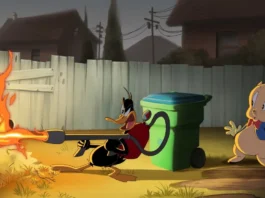My third fairy tale that needs a film adaptation is not European in origin like the other two I’ve discussed. Saat Bhai Champa–which translates to “seven champak flower brothers” is a Bengali fairy tale (note: the champak flower can refer to either magnolia champaca, plumeria, or mesua ferrea). Originally collected in the Thakurmar Jhuli (Grandmother’s Bag of Stories), it received a detailed update in 1944.
The main premise follows a maharaja (king) who has seven wives, as was the norm at the time. Unfortunately not a single wife could produce any children, until one day the youngest queen (chotorani) becomes pregnant! She gives birth to seven boys (!) and one girl. The eldest queens (bororani) in their jealousy and anger bury the children in the garden. They tell the chotorani she gave birth to crabs and mice, and bring the king frogs. Fairytale logic means that of course they both believe the eldest queens. The king banishes the chotorani and sulks forever.
Fairy tale logic also means that the youngest queen’s sorrow dries up the rivers, stops the crops from growing, and otherwise disrupts life going right. At last, this all ends when the king sends someone to pick the flowers for a pooja (Hindu prayer or offering). Those flowers, of course, are our seven brothers and sister. Parul (the sister) tells her brothers to wake up and let the king pick them but they say no, let the queens come first. One by one the queens try to pick the flowers, but to no avail. Then the youngest queen arrives, and the flowers all fall and turn into humans! The king kicks the eldest queens out and lives happily ever after with the chotorani and their children.
As with all fairy tales there is an element of suspending reality on the part of the audience. Thakurmar Jhuli, and really all South Asian fairy and folk tales follow in this vein. Who in real life would believe they had given birth to crabs, mice, or frogs? All the stories that are part of this collection are in parable form and conclude with some moral. Here it’s obvious: don’t be greedy and especially don’t lie—it’ll come back to bite you in the butt.
Though Saat Bhai Champa has been adapted a couple of times for Bangla speaking audiences in Bangladesh and India, it has yet to be adapted anywhere else. Understandable considering its plot premise is not all that palatable to American audiences. Seven wives? But I think it could totally work with two or three wives where the king has divorced each wife unable to produce heirs. The first two conspire together out of anger to hide the children in the ground or otherwise (magic is necessary).
Saat Bhai Champa as written does not lend itself to a full length film. But if Parul happens to survive (as she does in one Indian film) she could fight against the eldest queens or whatever magic that is keeping the brothers from turning back into humans (and also sing, as is required in Bengali fairy tales). Adaptations would not have to strictly stay in South Asia (we know how well they do that in American film). All that’s truly needed is wives who don’t give birth, a dunce king, and flowers.
Fairy tales have been written with less.




